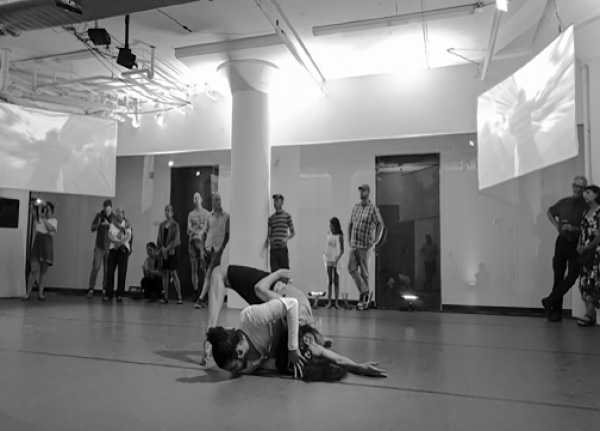
MYCELIAL: STREET PARLIAMENT
first performed on August 4, 2017
High Concept Laboratories, Chicago, IL
performed once in 2017
THE ASSEMBLY
Erica Mott, Ryan Ingebritsen, Hugh Sato, Liviu Pasare, Christopher Knowlton, Silvita Diaz Brown, Tony Reimer, Yasser Naser, Mounir Said, Ezzat Ismail Ezzat, Ahmed Saleh, Neijla Yatkin
Chicago, IL / Cairo, Egypt
661055025e661055025r661055025i661055025c661055025a661055025@661055025e661055025r661055025i661055025c661055025a661055025m661055025o661055025t661055025t661055025.661055025c661055025o661055025m
ericamott.com
MYCELIAL: STREET PARLIAMENT
THE ASSEMBLY
“Mycelial: Street Parliament” is an interactive installation performance that investigates civic participation and social uprising in the digital age. Technology connects people around the world in seconds, but without real-time bodies sharing space and conversation, an important mode is lost. This interdisciplinary work uses video, new technologies, and a custom mobile phone application to choreograph performers, engage audiences, and promote dialogue across cultures. Mycelial—from the word “mycelium”—refers to the branching hyphae of a fungus, which form extensive communication networks that nourish entire forest root systems. This metaphor aptly reflects the ethos of our project: creating deeper dialogues and building kinetic empathy to highlight interdependence and human resilience. Ultimately, “Mycelial: Street Parliament” strives to be an immersive platform where embodied experience can spark conversation around “otherness” and artistic practice as cultural diplomacy.
In partnership with the US State Department, the City of Chicago, and Ezzat Ezzat Contemporary Dance Studio in Cairo, we have developed Mycelial through a unique series of one-to-one creative exchanges between American and Egyptian composers, computer programmers, dancers, and new media artists. Drawing on the experiences of activists during the Occupy Wall Street Movement, and the Egyptian Revolution of 2011, the team has implemented new and emerging technologies to dissect the collision and collusion of bodies occupying both digital and physical spaces. The question of digital presence versus physical presence in occupation remains highly debated among academics and activism theorists. By harvesting data from social media feeds of these two movements, we hope to bring new information to the conversation on links between emotion, dialogue, and action. The ambulatory performance experience allows audiences to move through the installation, interact with their movements, and participate through instructions on their mobile phones to change the projections and sound environment.